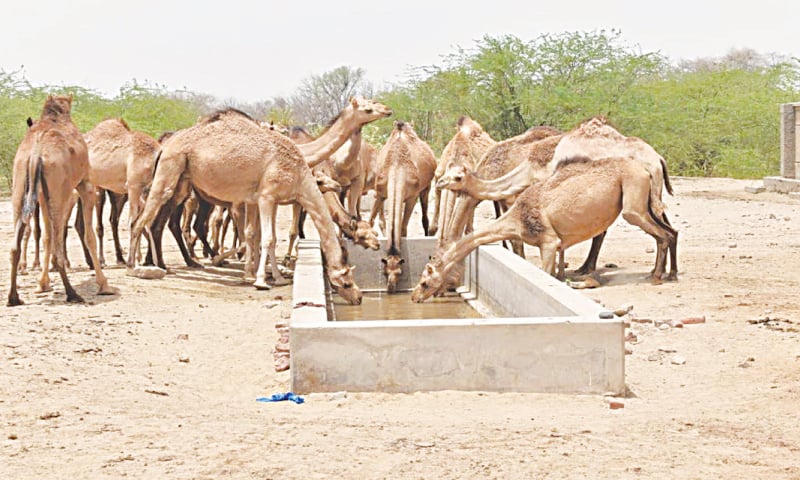ISLAMABAD: A severe heatwave in March and April devastated vegetation, water resources and livestock in Cholistan region, according to a report prepared by the Pakistan Meteorological Department and seen by Dawn.
The report says the high-intensity heatwave persisted for 41 days (from March 11 to April 19), followed by a short spell of six days (April 27 to May 2) of relatively low intensity.
Although rainfall was adequate in the region during the winter, the persistent heat wave could presage the onset of drought in Cholistan due to water depletion in ponds and reservoirs.
The PMD said the drought situation was assessed by using satellite-based equipment.
Although the overall picture is not very alarming, “exceptionally high land surface temperatures” had caused considerable damage to vegetation in the eastern part of Cholistan.
The land surface temperature rose due to a consistent surge in day-time temperatures over the past two months.
The probability of drought in the eastern portion is very high in the “coming months”, the PMD report warned.
Cholistan receives very little rain in winter, but it got above-average amount of rain in January this year.
During the months of February and April, however, the rainfall was negligible.
The spells in January, March and early this month helped lessen the moisture stress and to stave off drought-like conditions, for now.
The Cholistan desert straddles three districts — Bahawalnagar, Bahawalpur, and Rahimyar Khan. It is spread over an area of over 6.6 million acres. Over four million acres are situated in Bahawalpur alone.
The length of Cholistan is 480km and its width ranges between 32 and 192km.
The human population of the region is 155,000, while livestock number over 1.3m. The livestock consist mostly of camels, sheep and goats.
The Cholistan region falls in a “hyper/extremely arid” climate. According to the PMD, July is the wettest month and November the driest in the region.
It gets its highest rainfall of 48.4 millimetres in July.
The average temperature ranges from 20 degrees Celsius to 42.2, with June being the hottest month.
The highest-ever temperature recorded — 50.8 Celsius — was at Khanpur (Rahimyar Khan) station in June and the lowest-ever (-4.3°C) in January.
The average annual rainfall is 179.3mm while the record is 247.3mm in the desert’s Bahawalnagar portion.
Since the monsoon system brings 67 per cent of the region’s annual rainfall from June to September, the next three months will be decisive for the region.
If the amount of rain matches the average rainfall, things will be rosy. Otherwise, drought will not be far behind.
Published in Dawn, May 21st, 2022












































Dear visitor, the comments section is undergoing an overhaul and will return soon.